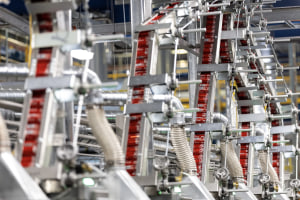Country of origin labelling (CoOL) should provide consumers with easily identifiable label information that enables them to make an informed choice when they buy Australian-made or -grown products.
Through that informed choice, consumers can support the ongoing employment of Australians involved in the production of these products.
The food and grocery manufacturing sector employs 296,300 Australians – about three per cent of all employed people – and pays $11.3 billion a year in wages.
It logically follows that any review of the CoOL regulations to improve the usefulness to consumers should give high priority to ensuring labelling continues to inform consumers about where the jobs are in the making of a particular product.
The Greens’ bill currently before the Parliament fails to provide clear information about where the value-adding takes place with processed foods – that is, literally where they are made. This bill seeks to prohibit the use of the terms ‘Product of’ and ‘Made in’ in relation to food.
Its alternative label ‘Made of Australian Ingredients’ prescribes a minimum threshold of 90 per cent by weight for Australian content in packaged and processed foods, and prohibits claims for unpackaged foods that contain any ingredient not grown in Australia.
The focus of this amendment is on the agriculture sector, with detailed information on where food raw material and commodities are produced. However, missing from this is the most basic information that underpins the very rationale for CoOL – information about where the jobs are.
And worse, it expressly bars companies from using ‘Made in Australia’ on their labelling to indicate that the jobs in the manufacture of the product are here in Australia.
To highlight how this can result in perverse outcomes, consider a simple example of chocolates that are produced in a
chocolate factory in, say, Tasmania. They consist of various
ingredients that are mixed and transformed into chocolate in a
factory that employs a lot of people. By any common sense
understanding of the term, these are clearly made
in
Australia.
Yet because some of those ingredients by necessity are imported – notably cocoa, which is not produced in any quantity in Australia – under the Greens’ proposal these chocolates could carry neither ‘Made of Australian Ingredients’ or ‘Made in Australia’ on their labels.
Equally absurd would be the example of Australian wheat that is shipped to China, processed and transformed into noodles, packaged and imported back into Australia. It is conceivable that under the Greens’ proposal this product could carry on its label ‘Made of Australian Ingredients’, since the key ingredient –wheat – came from Australia.
A consumer seeing this on the label would be duped into believing the product had been manufactured in Australia when it was not. The manufacturing and jobs were overseas.
Failing to acknowledge the full value-add through the food processing sector means failing to give consumers the option of supporting the nearly 300,000 Australians employed directly in the Australian food and grocery manufacturing sector.
That’s not to say the system could not be improved and the AFGC supports a review of CoOL regulations to improve their usefulness to consumers while also enhancing our brand overseas.
Key to any improvements should be a concerted and powerful campaign to promote the premium claim ‘Product of Australia’. This is vital not only to improve consumer understanding in Australia but also to create a stronger, more powerful premium brand for Australian food in export markets.
The current test for ‘Made in Australia’ focuses on substantial transformation – or where the jobs are – and the requirement that at least 50 per cent of the cost of producing the goods must have occurred here. This is important and meaningful information for consumers that should not be lost.
Throwing out the current system entirely to replace it with a whole new approach is extremely problematic because the current ‘substantial transformation’ and value tests are useful as indicators of where the jobs and economic activity take place in the production process.
Additionally, the cost per SKU of a changeover to an entirely new system would be high and the current system aligns with international agreements and treaties and there is value in maintaining consistency in this area – particularly when it’s the major global companies that drive a lot of investment and innovation in the food and grocery manufacturing sector.
Rather than throwing out the baby with the bathwater, the AFGC recommends an approach that adds to, rather than does away with, the current test. The AFGC proposes a sensible way forward that avoids further confusing consumers and provides additional meaningful information about the source of a food product as follows:
Made in Australia with Australian and imported ingredients:
- Substantial transformation occurs in
Australia (current test)
- 50 per cent or more of the total costs
attributable to production or manufacturing occurred in Australia
(current test)
- 50 per cent or more of ingredients sourced from
Australia (new test)
Made in Australia with imported and
Australian ingredients:
- Same as above except five to 50 per cent
of ingredients sourced from Australia
Made in Australia with
imported ingredients:
- As above except less than five per cent
of ingredients sourced from Australia
Product of
Australia:
- Remains the premium claim – every significant
ingredient or component sourced in country and virtually all
manufacturing processes occurred in country – in accordance with
WTO agreements.
- This needs to be more effectively promoted as the premium claim, including in export markets to capitalise on growing demand, particularly in Asia.






